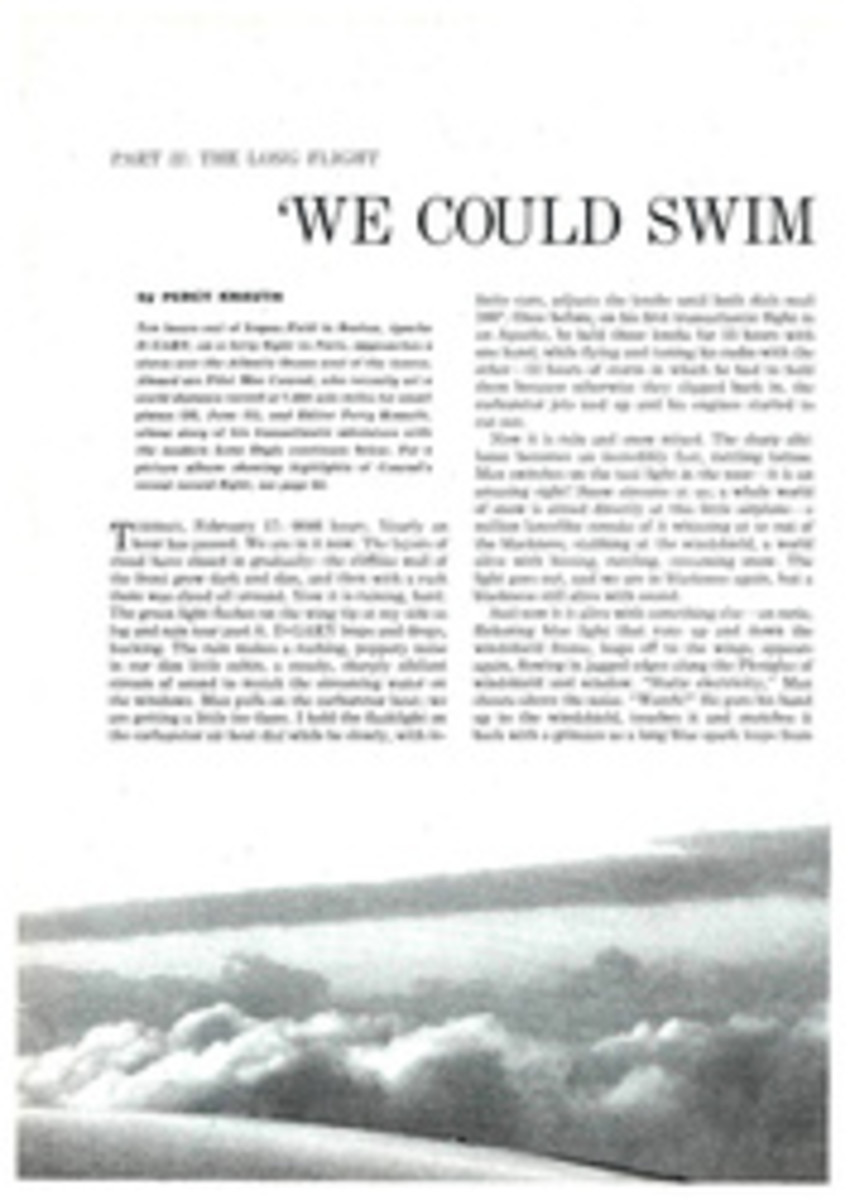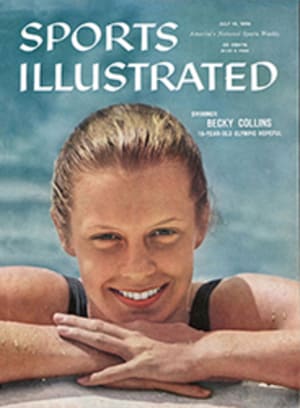
SOUTH AFRICANS AT MUIRFIELD
The New British Open champion is one with whom the professionals in the U.S. as well as Britain may have to reckon for as many as 20 years to come. At 23, Gary Player, of the romantically named Killarney Club in South Africa, is the youngest player to win the British title since it became a 72-hole event some 68 years ago and also, incidentally, the only man in history to match Ben Hogan's 1953 achievement of winning with four rounds each of which was lower than the one before. Hogan at Carnoustie had 73, 71, 70, 68—282; Player at Muirfield had 75, 71, 70, 68—284.
When Player went on the first of the five world tours which he has already crammed into his short career, it was clear even to a moderate club golfer that his flat-as-a-pancake backswing could do him no permanent good. He was much helped along the path toward orthodoxy by Hogan and declares that in achieving it he practised as hard as the great man himself. It seems to be the ambition of all professional golfers eventually to own a farm. Aided by his second prize in last year's U.S. Open, young Player has his already—with 10 cows, 20 sheep and 3,000 chickens.
Color was lent to the qualifying rounds by two gentlemen named "Papwa" Sewsunker Sewgolum and Edward Johnson-Sedibe, both from South Africa. Edward, a Negro of cheerful disposition, arrived on the eve of the championship, privately, if tardily, sponsored, borrowed a set of clubs, took 88 and declared that he liked the country so much that he intended to stay for two years especially if someone would give him a ride back to London. Papwa, an Indian from Durban, proved to be of more serious stuff. Like so many South African caddies he can beat the best amateurs in his club and, like Sam Snead, he reckons to play his best in bare feet. He holds the club with his left hand below his right and in the first qualifying round went round in 71 in a downpour. So much for those of us who write books on how to play golf!
With so much money at stake at home, the leading American professionals no longer venture across the Atlantic as Hagen and Sarazen did in the golden age of golf. Much as we may regret it in Britain, we can hardly blame them, yet I venture to believe that they lose something by not coming at least once, and that even Hogan felt that the British Open added a sense of completeness to his career. This year the American element was represented mainly by Willie Goggin, who had won the world senior professional championship, and Robert Sweeny Jr., winner of the British Amateur in 1937 and so nearly of the U.S. Amateur in 1954.
Four years ago Raymond Oppenheimer was appointed chairman of a committee formed to seek out and encourage amateur golfing talent in Britain. Though his team did not succeed in beating the new and youthful talent discovered by the U.S. for the Walker Cup, the four leading members of it proved in the Open that amateurs are once again a force to be reckoned with in Britain. Reid Jack set a Muirfield amateur record with 68 and drew within two strokes of the leaders with one round to go and finished equal fourth with 288. Michael Bonallack was two strokes more, while Guy Wolstenholme after a weak first round had 70, 73, 70, raising the biggest cheer of the championship by holing his final stroke with a two-iron from upward of 200 yards—possibly the longest stroke ever holed in an Open on either side of the Atlantic. Such scoring lends hope that the British may yet give a good account of themselves in a Walker Cup match.
There was even a certain amateurishness among the professionals. Leading after three rounds, with Player still four shots behind, were Sam King and Fred Bullock. King, who played against the U.S. in the Ryder Cup match before and after the war, is now, at 48, more of a farmer than a golfer and is affected by the prospect of a two-foot putt rather like a sufferer from vertigo looking down from the Empire State Building. Bullock runs the driving range which American visitors may have noticed at Prestwick Airport, the lengthening of whose run ways put his golf course out of business.
In the end Player, who had declared that in order to catch up he would "do a 66 or burst," needed, incredibly enough in the high wind, only a 4 to do it. He hooked into a bunker, played out safe and ended in complete anticlimax with a limp six-iron and three putts. However, 68 was a wonderful round and his only punishment was an uncomfortable hour and a half's wait in the clubhouse. At last, only Flory Van Donck of Belgium, and Bullock could catch him. Each needed a 3 at the 427-yard home hole. Each took 5.
One incident in the championship will be of interest to those in America who, like your correspondent, think that the Rules of Golf verge upon lunacy and that the 90-odd pages of them could well be compressed onto the back of a scorecard. In the second qualifying round a young Glasgow University student, Raymond Munro, holed Muirfield in 69, the best round of his life. His partner, having omitted his score at one hole by mistake, inserted his homeward score of 35 in the space for the 18th. Munro, having indisputably gone around in 69, was disqualified.
For similar oversights in card-making Mrs. Jackie Pung was disqualified after indisputably winning the U.S. Women's Open—a misfortune which so touched the members of the Winged Foot Club and others that they opened a private subscription for her. Peter Thomson was disqualified from the Masters, while in another event in America, a competitor whose last-nine 39 was inserted in the space for the 18th solemnly got them added to his score, which became, I think, 128.
Golf is made for golfers, not golfers for golf. Is this sort of thing what golfers really want? Did Mrs. Pung's fellow competitors, when she had fairly beaten them, really want her disqualified for an error of clerking? They say in the legal world that "the law is an ass." They ought to see the Rules of Golf!
PHOTO
RINGED BY HAPPY FANS, GARY PLAYER, YOUNGEST EVER TO WIN BRITISH OPEN, GIVES CHAMPIONSHIP TROPHY ECSTATIC HUG
FIVE PHOTOS
BIZARRE CROSS-HANDED SWING USED BY SOUTH AFRICA'S SEWGOLUM (ABOVE) PRODUCED A QUALIFYING ROUND OF 71

